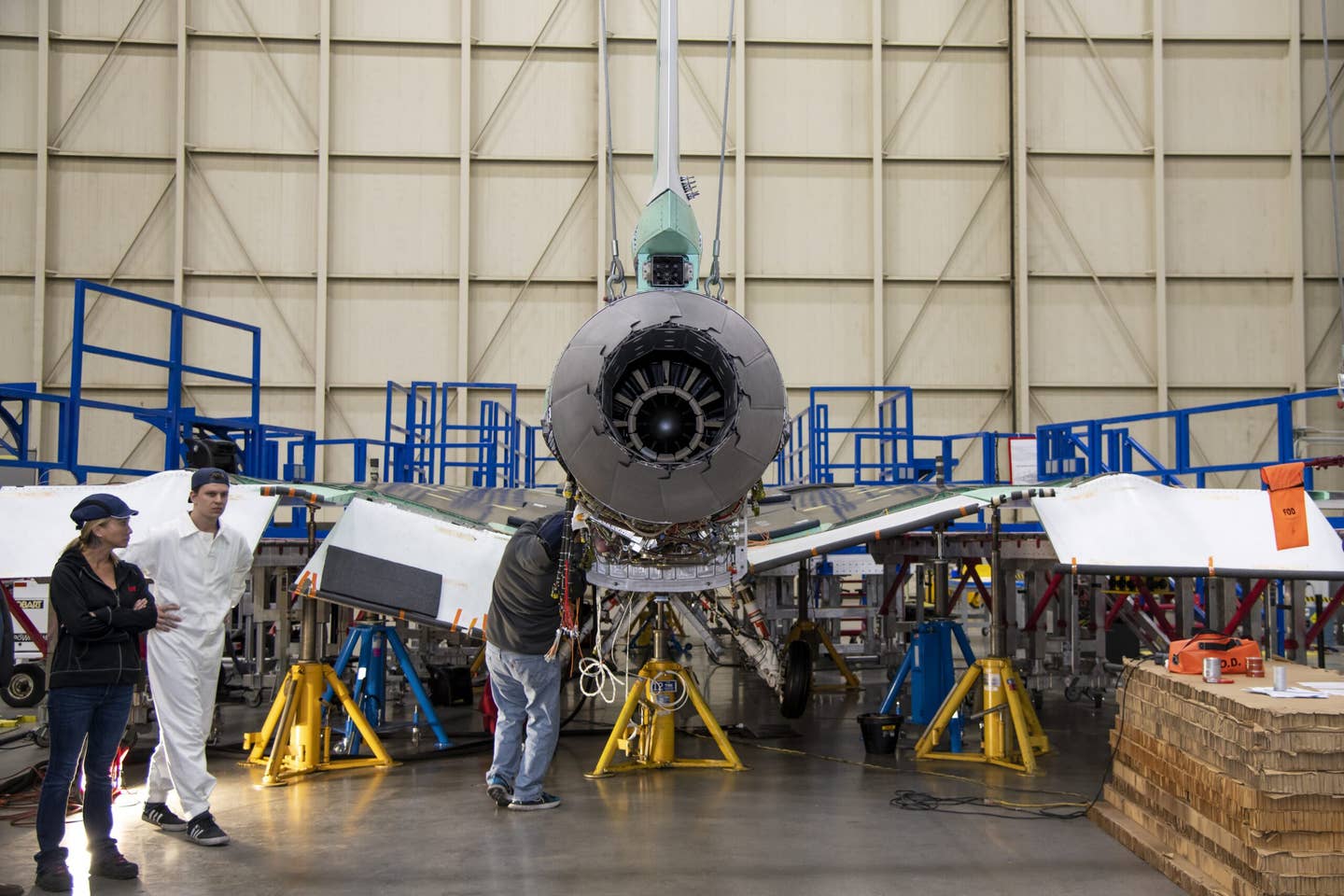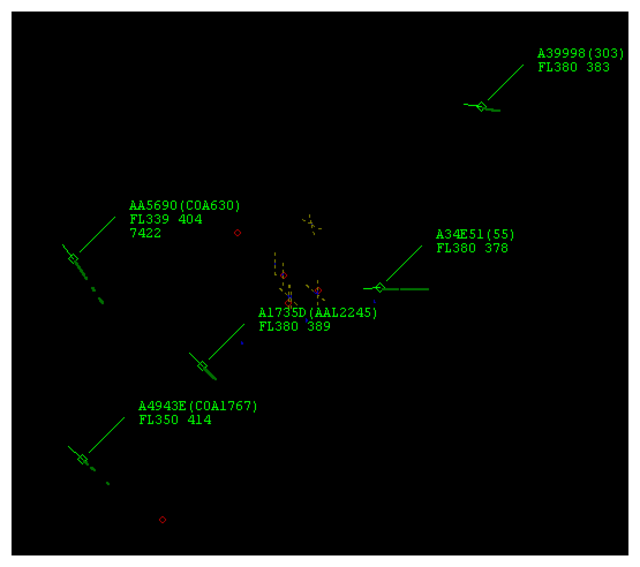Engine Installed On NASA X-59 Quiet Supersonic Demonstrator
NASA announced this week that the engine for its X-59 Quiet SuperSonic Technology (QueSST) research aircraft has been installed. Installation of the engine, a F414-GE-100 from General Electric Aviation, was…

Image: NASA/Carla Thomas
NASA announced this week that the engine for its X-59 Quiet SuperSonic Technology (QueSST) research aircraft has been installed. Installation of the engine, a F414-GE-100 from General Electric Aviation, was completed at Lockheed Martin’s Skunk Works facility in Palmdale, California. The X-59, which was designed to “reduce the sound of sonic booms … to a quiet sonic ‘thump,’” is currently slated to fly for the first time in 2023 with demonstration flights over communities around the U.S. planned for 2025.
“The engine installation is the culmination of years of design and planning by the NASA, Lockheed Martin, and General Electric Aviation teams,” said Ray Castner, NASA propulsion performance lead for the X-59. “I am both impressed with and proud of this combined team that’s spent the past few months developing the key procedures, which allowed for a smooth installation.”
The X-59 is expected to be capable for flying at speeds of up to Mach 1.4 and reaching an altitude of around 55,000 feet. According to NASA, data gathered from QueSST demonstration flights will be used to explore the possibility of allowing commercial supersonic flight over land. As previously reported by AVweb, the $247 million contract to build the X-59 was awarded to Lockheed Martin in 2018.






